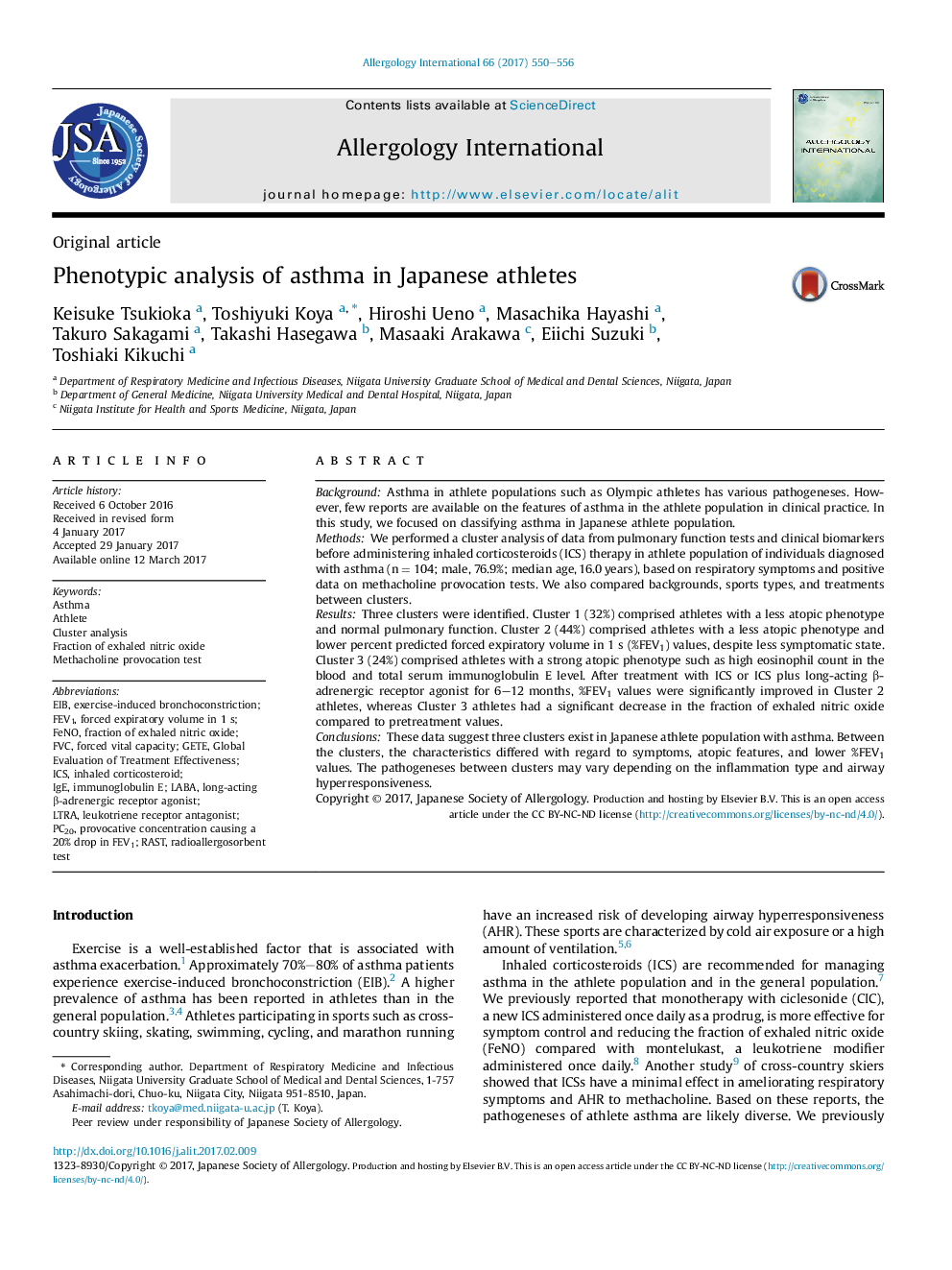| Article ID | Journal | Published Year | Pages | File Type |
|---|---|---|---|---|
| 5665145 | Allergology International | 2017 | 7 Pages |
BackgroundAsthma in athlete populations such as Olympic athletes has various pathogeneses. However, few reports are available on the features of asthma in the athlete population in clinical practice. In this study, we focused on classifying asthma in Japanese athlete population.MethodsWe performed a cluster analysis of data from pulmonary function tests and clinical biomarkers before administering inhaled corticosteroids (ICS) therapy in athlete population of individuals diagnosed with asthma (n = 104; male, 76.9%; median age, 16.0 years), based on respiratory symptoms and positive data on methacholine provocation tests. We also compared backgrounds, sports types, and treatments between clusters.ResultsThree clusters were identified. Cluster 1 (32%) comprised athletes with a less atopic phenotype and normal pulmonary function. Cluster 2 (44%) comprised athletes with a less atopic phenotype and lower percent predicted forced expiratory volume in 1 s (%FEV1) values, despite less symptomatic state. Cluster 3 (24%) comprised athletes with a strong atopic phenotype such as high eosinophil count in the blood and total serum immunoglobulin E level. After treatment with ICS or ICS plus long-acting β-adrenergic receptor agonist for 6-12 months, %FEV1 values were significantly improved in Cluster 2 athletes, whereas Cluster 3 athletes had a significant decrease in the fraction of exhaled nitric oxide compared to pretreatment values.ConclusionsThese data suggest three clusters exist in Japanese athlete population with asthma. Between the clusters, the characteristics differed with regard to symptoms, atopic features, and lower %FEV1 values. The pathogeneses between clusters may vary depending on the inflammation type and airway hyperresponsiveness.
